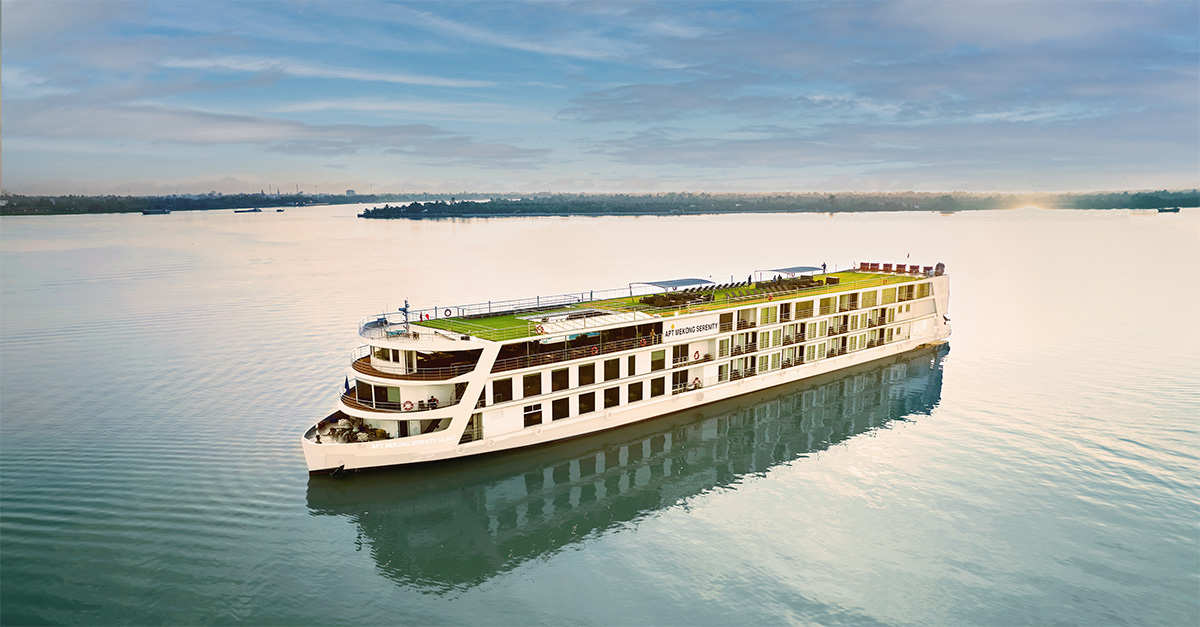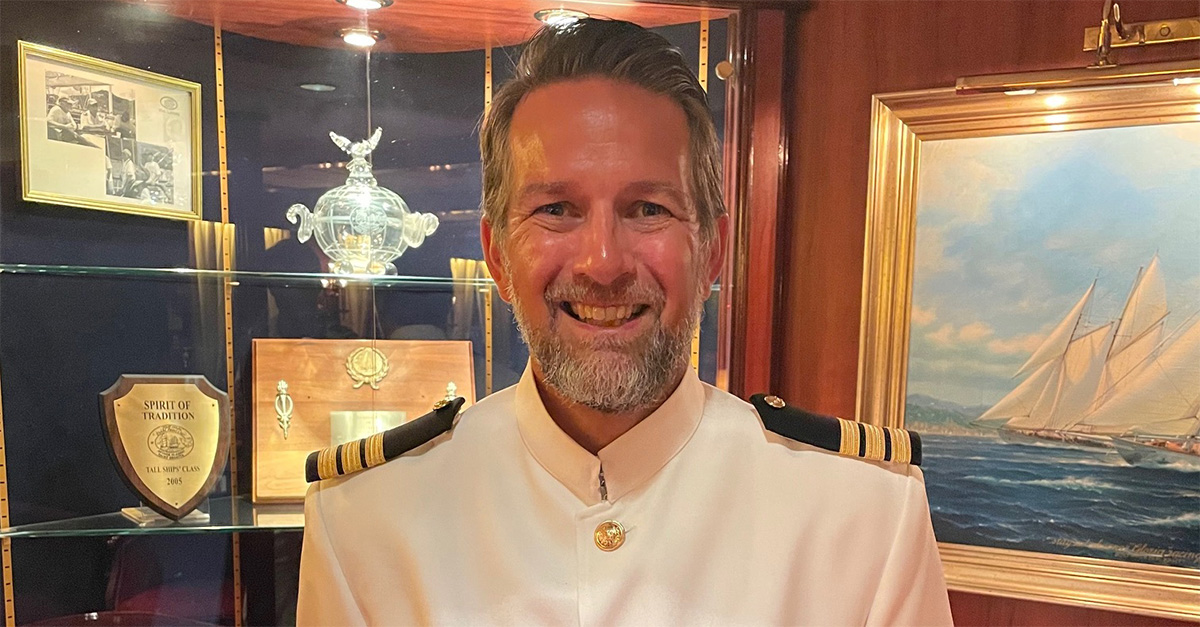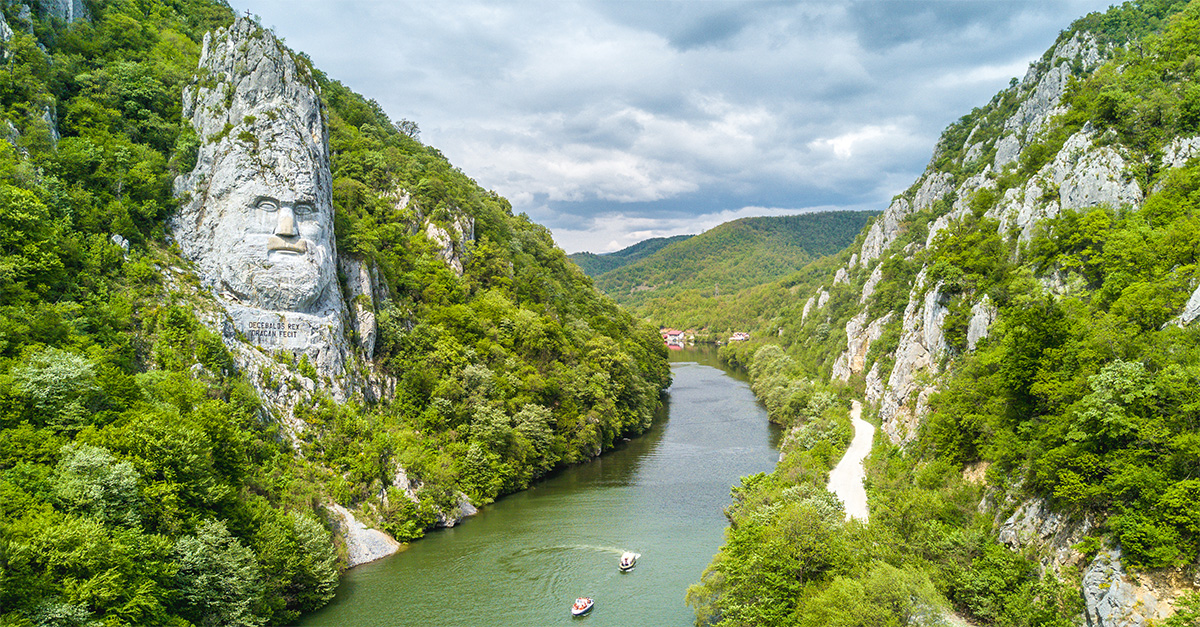Discover an ancient culture, technological wonder and the stellar shopping behind the words ‘made in China’, writes Russell Higham
Click here to download and save as a PDF
A journey of a thousand miles begins with a single step.” I’m reminded of the old Chinese proverb as I step aboard Viking Yi Dun, the line’s 930-guest ship designed for exploring the East and South China Seas. It’s moored in Shanghai, where its elegant silhouette is framed against a futuristic cityscape, the perfect starting point for my voyage of discovery.
The cruise terminal is just steps from the Bund, Shanghai’s historic waterfront district, full of heritage European buildings from the turn of the 20th century. The view from my stateroom veranda, however, is of Shanghai’s modern financial powerhouse on the other side of the Huangpu River.
Gravity-defying skyscrapers of all shapes and sizes, many of them ranking among the tallest on the planet, are lit up in a dazzling animated light show that feels like a scene from Blade Runner brought to life.

This contrast would soon come to epitomise the experience of cruising through China.
Shanghai history
With more than 5,000 years of cultural history ashore, the onboard enrichment has a lot to live up to – but Yi Dun has it covered. Dr Grant Rhode, one of the resident historians, is a professor at the US Naval War College and a research associate in Chinese studies at Harvard University. Over coffee in Mamsen’s — the cosy Scandi-chic heart of all Viking’s ships — he shares in my wonder at Shanghai’s modern side.
“What was nothing but rice paddies back in the 1970s is now one of the world’s greatest skylines,” he marvels.
The coastal city seems more cosmopolitan than Beijing – where we’d spent a three-day pre-cruise stay – and soon we’re ready to explore more of Shanghai’s contradictions.
A shore excursion takes in a Taoist temple and a moment of meditation in a serene Zen garden, then ends at Nanjing Road, one of the busiest shopping districts in the world. This wide thoroughfare is emblazoned with giant 3D screens beaming holographic advertisements down to amazed onlookers. All the usual luxury brands are here, as well as the latest Chinese electronic gadgets that are way ahead of their western counterparts.

Good food in Shanghai
Our credit cards duly exercised for the morning, we ask likeable tour guide Wong Hai to recommend a good restaurant off the tourist trail. He steers us to a spot beneath a bubble tea shop to try one of Shanghai’s specialities, xiao long bao. My companion and I share a generous bowl of these fragrant soup dumplings plus a plate of local hairy crab, dished up in bamboo baskets and washed down with a huge bottle of regionally brewed beer – for a total of £9 between us.

That evening, after a shadow puppetry performance in the ship’s Star Theatre by one of China’s most famous troupes, I speak with Arann Smith, Yi Dun’s Leeds-born consultant cruise director. “I’ve been with Viking three years,” he says. “But it’s my first time in China — and there’s simply nothing that compares to it.”
The next stop is Zhoushan, where my breakfast of delicate Chinese tea eggs is pleasantly interrupted by a band of drummers and dragon dancers giving us a loud and colourful shoreside welcome. This island is home to Putuo, one of Buddhism’s four sacred mountains and the scene of a large-scale outdoor show directed by Zhang Yimou, who was responsible for the 2008 Beijing Olympics opening ceremony.
Using the 284m-high mountain and the surrounding landscape as a backdrop, a cast of more than 200 perform a spellbinding moonlit show in front of a seating area that rotates 360 degrees as the story unfolds.

Viking Yi Dun makes further stops along the coast, including at Pingtan on the Taiwan Strait – the closest point on the mainland to Taiwan – until our disembarkation at Shenzhen, the Chinese equivalent to Silicon Valley. It’s where many of our everyday gadgets such as iPhones, tablets and laptops are manufactured.
Shopping in Shenzhen
Yet any preconceptions we may have had about drab factories belching out smoke into a dour-looking city were instantly dispelled. It’s one of China’s greenest urban centres with good air quality and more than 45% of its territory dedicated to parks and green spaces.
Immaculate, tree-lined highways lead us through smart residential districts full of designer apartments and well-dressed ‘tech bros’. Many of the EVs they drive are made by Chinese companies but look, at first glance, like Porsche or Tesla, and I also spot plenty of genuine Bentleys and Maseratis cruising sedately around the streets. Surprisingly – or perhaps not, given the country’s reputation for discipline – nobody seems to speed in China, even on the less-congested roads.
We supplement Viking’s Day of Culture and Nature excursion – an excellent five-hour exploration of how this small fishing village on the Pearl River became a city of 17.5 million producing many of the world’s technological goods – with a visit under our own steam to Huaqiang electronics market.
Here, multi-level shopping malls are crammed with hundreds of stalls hawking the latest high-tech wizardry, all for a fraction of the price back home. We pick up a backpack with an LED screen on the outside that can display whatever message or picture you choose – a risky gift for a teenage nephew with an ‘unfiltered’ sense of humour, but a steal at only £20 compared to £150 in the UK.
Shenzhen is just across the water from Hong Kong, which we can see from our ship, offering one last chance to bag more bargains and squeeze in some final sightseeing before we fly home. The ferry to Hong Kong airport leaves from the terminal right next to where Yi Dun has docked, and takes just 45 minutes.
“That’s ‘Shenzhen speed’,” says Wong Hai, explaining how the term has become synonymous with all that is ‘fast and efficient’ about modern China.
My Viking cruise has given me a fresh understanding and respect for the vast country I had previously only known through media and through cultural exports such as its food. It’s also given me many large bags of electronic bargains that are dangerously close to excess-baggage territory on the flight home. A small price to pay, though, for such a special voyage that offered education and entertainment in equal measure, and most of all, left me utterly enchanted by China.
Book it
Viking offers a 14-night Coastal Jewels of China cruise departing September 5, 2025, with stops in Beijing, Dalian, Qingdao, Shanghai, Zhoushan, Dongtou, Pingtan, Xiamen and Shenzhen. Prices from £6,495 per person based on double occupancy, including flights from London or selected regional airports, accommodation in a Veranda stateroom, transfers, all onboard meals including wine, beer and soft drinks with lunch and dinner, included excursion in each port, Wi-Fi, gratuities, evening entertainment and enrichment programme.
vikingcruises.co.uk
Ship review: Viking Yi Dun

Viking Yi Dun
Dining: Viking Yi Dun boasts six restaurants and several bars, cafes and lounges serving food and drinks.
Given the relatively small number of guests on board, a table in your choice of venue is nearly always available without having to wait long. However, booking is advisable for the two speciality restaurants, Manfredi’s and The Chef’s Table.
Wellness: As well as a fully equipped gym offering various exercise and yoga classes, guests can enjoy the Nordic spa with sauna, steam room, ice-water plunge pool, snow grotto and multi-experiential shower. There’s also a small hydrotherapy pool with whirlpool bath area. Massage and beauty treatments are available too.

Enrichment: Viking Yi Dun’s team of speakers and historians deliver a wide array of lectures and talks each day on subjects relevant to the itinerary. Other activities around the ship include acrobatic and dance performances, food tastings, cultural quizzes, topical debates and tea ceremonies; as well as classes in subjects ranging from Chinese calligraphy to mahjong.
3 of the best ports in China to explore
❂ Beijing: China’s capital is home to seven Unesco World Heritage Sites, including the Forbidden City, the Temple of Heaven, the Summer Palace and the Imperial Tombs of the Ming and Qing Dynasties.
Several sections of the Great Wall also pass through Beijing, with Badaling the most accessible.
❂ Xiamen: This attractive port city across the strait from Taiwan was historically known as Amoy.
Combining a mix of ultra-modern and colonial-era architecture with idyllic natural scenery, it is part of Fujian Province, often referred to as the ‘tea capital of China’.
❂ Hong Kong: Though no longer under British sovereignty, Hong Kong is still one of the most western-facing parts of China in terms of culture and language. A trip by Star Ferry (60p) to the markets of Kowloon is a must, as is a tram ride to The Peak for views of the city’s futuristic skyline and famous harbour.

PICTURES: Shutterstock/ABCDstock; Shutterstock/Meiqianbao, Lushengyi; Russell Higham; Shutterstock/Only Fabrizio




